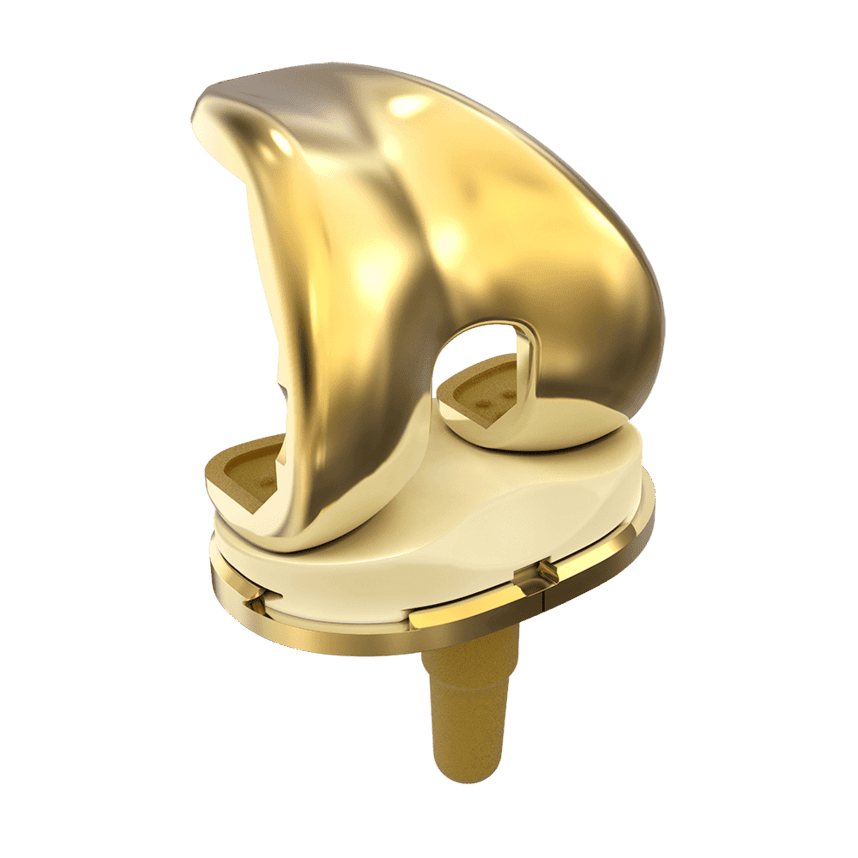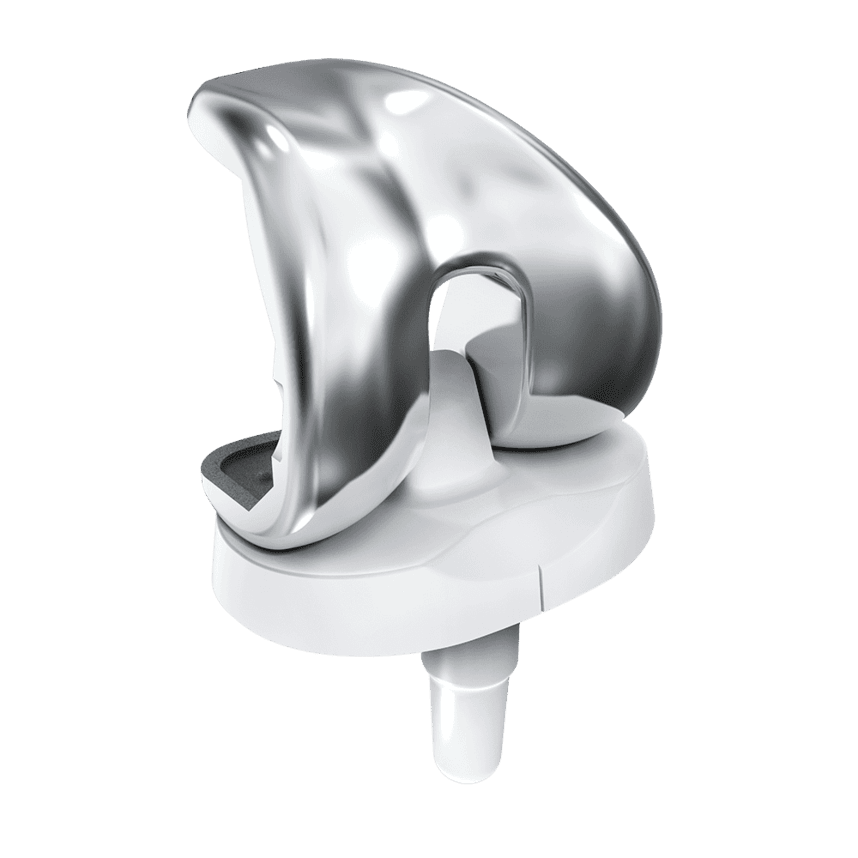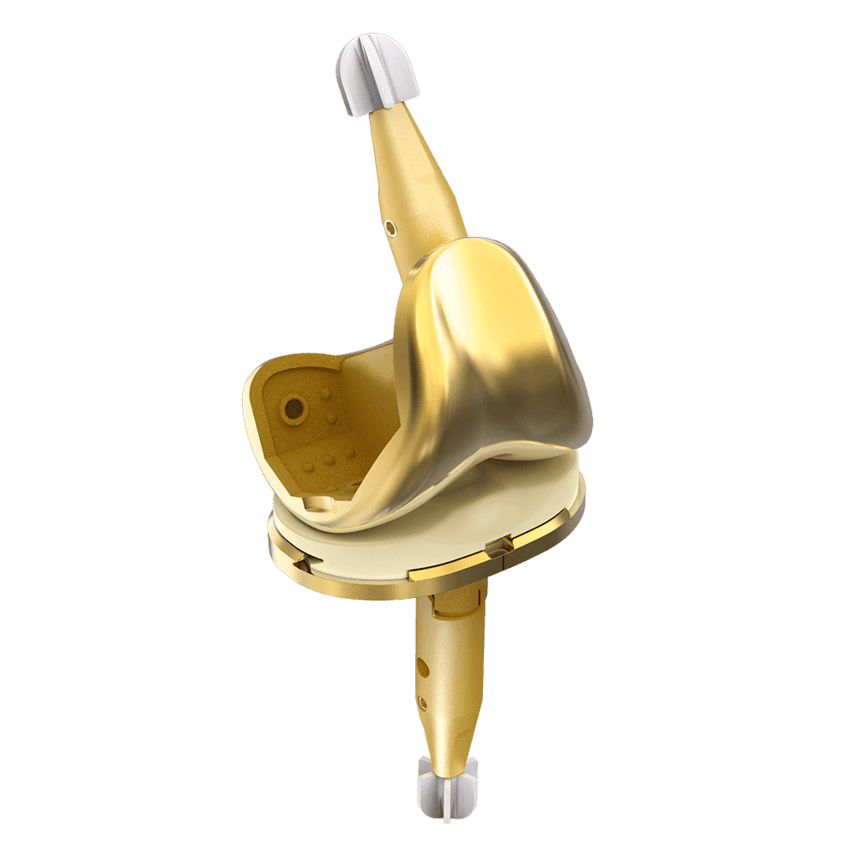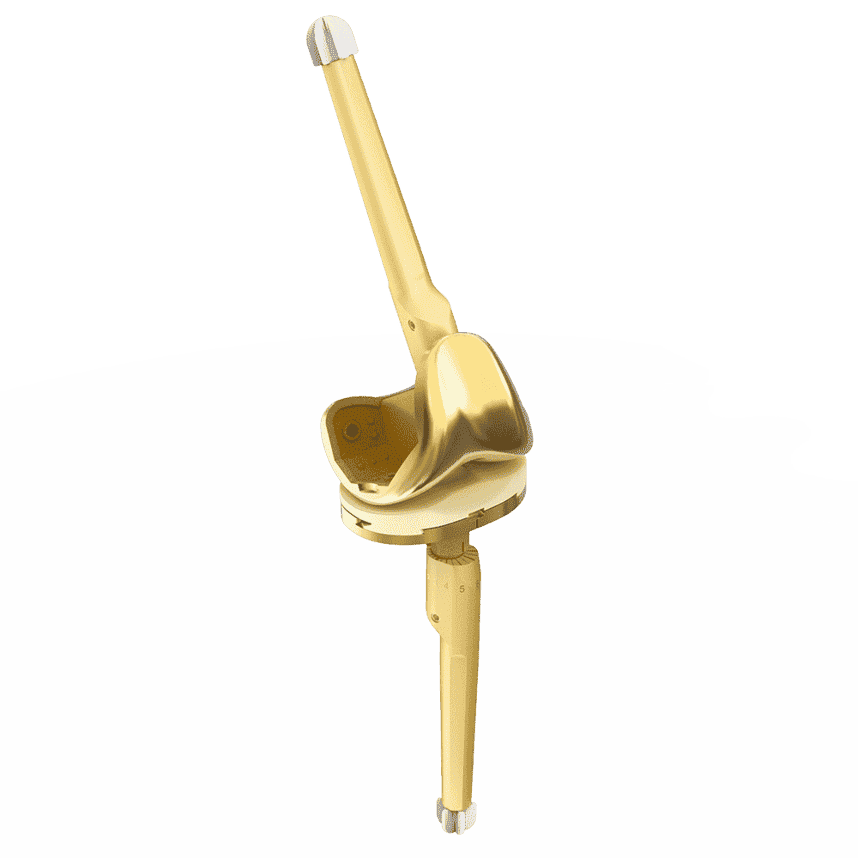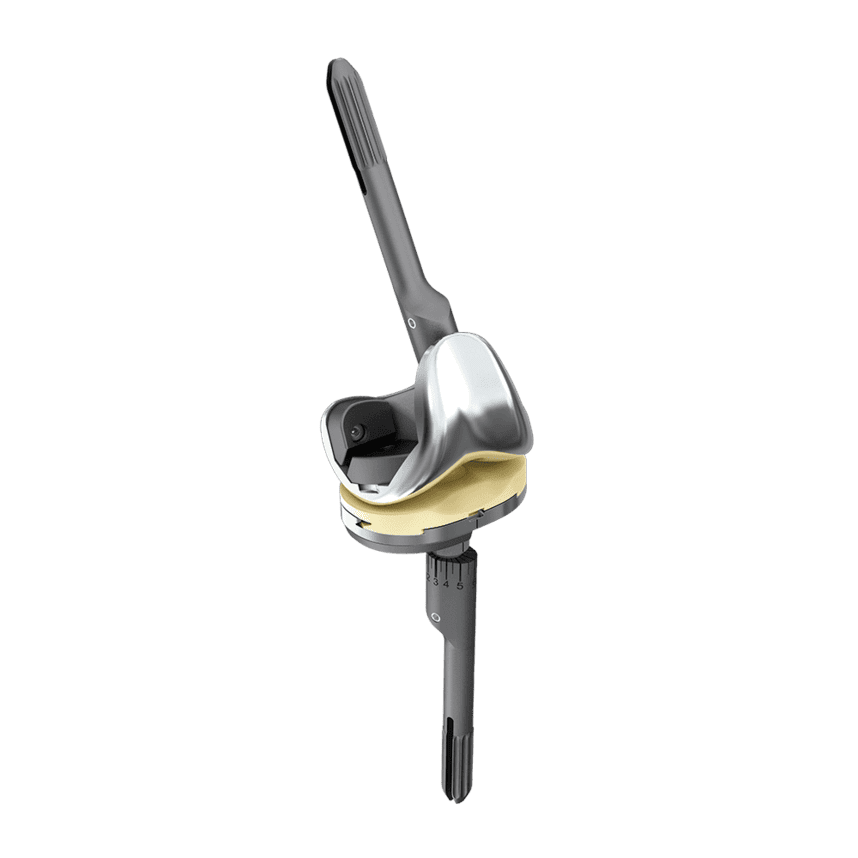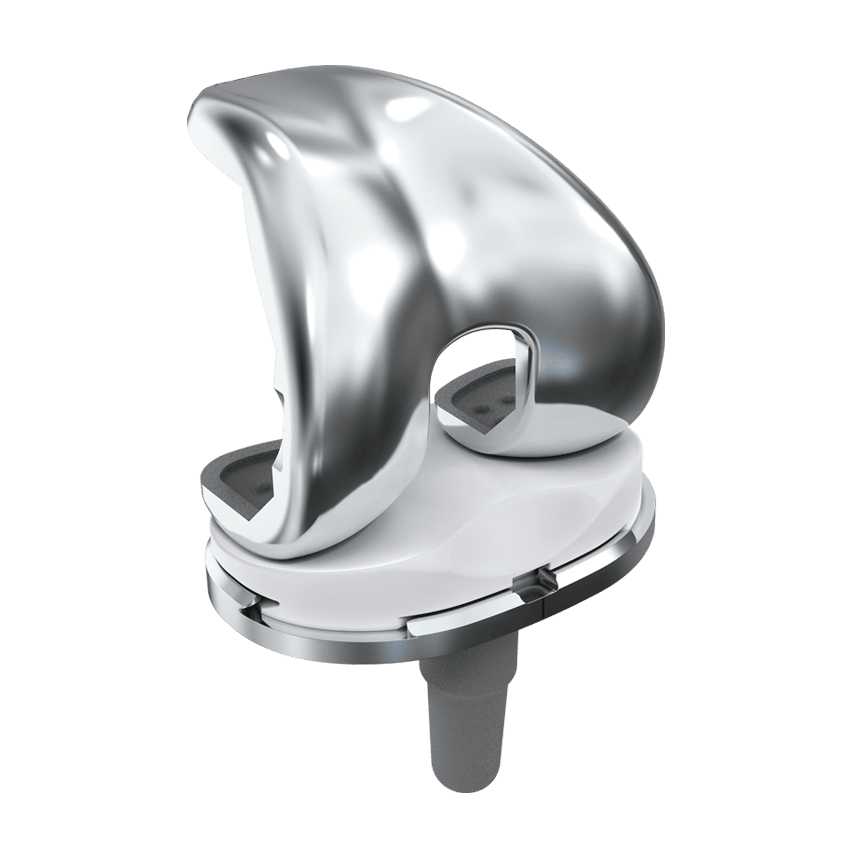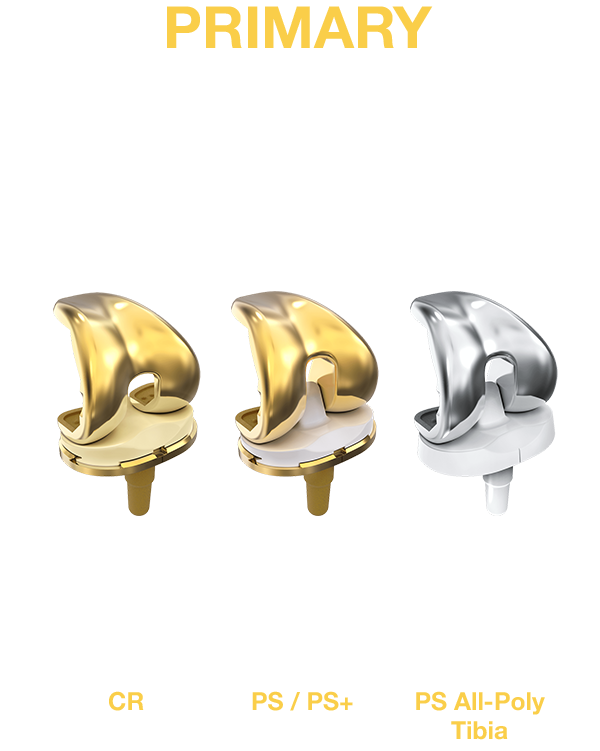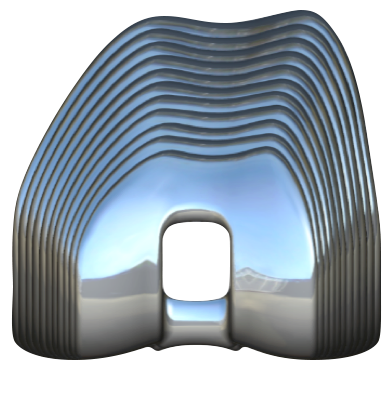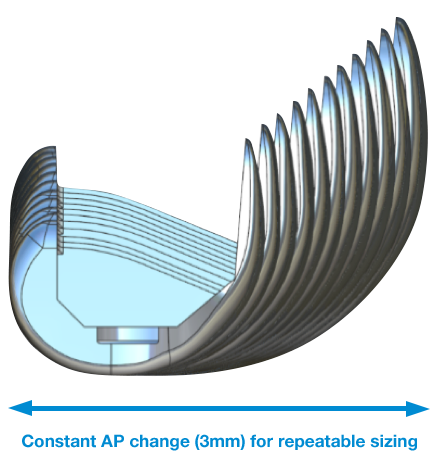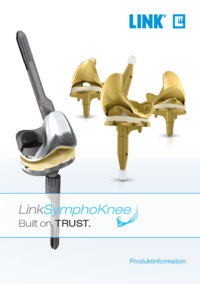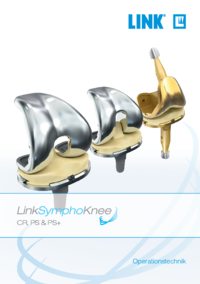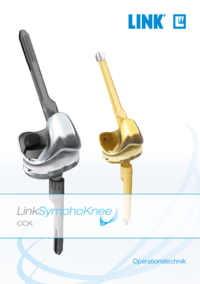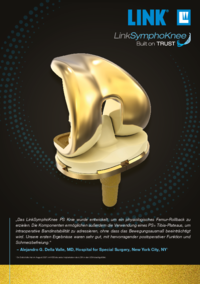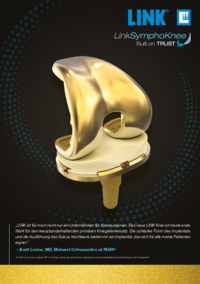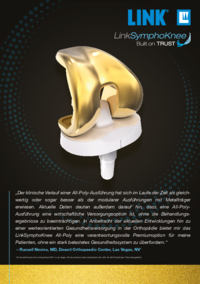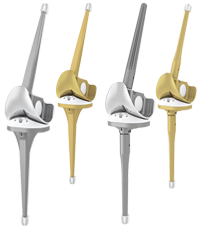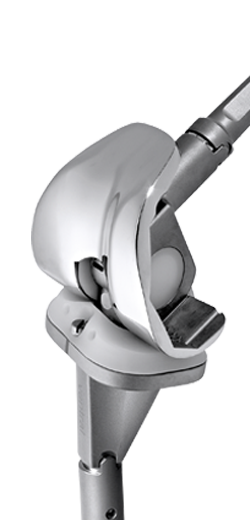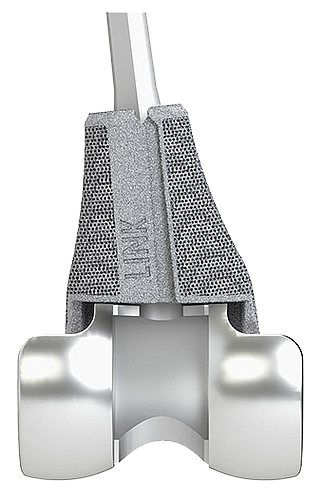Auf unserer LinkSymphoKnee Website finden Sie auch interessante Fallbeispiele: www.linksymphoknee.com
LinkSymphoKnee ist ein Komplettsystem für Primär- und Revisionseingriffe beim Knie-Oberflächenersatz.
Auf Basis seiner jahrzehntelangen Erfahrung hat Waldemar Link ein umfassendes Kniesystem entwickelt, das alle Aspekte der modernen Knietotalendoprothese berücksichtigt – von kreuzbanderhaltenden und posterior stabilisierten Prothesen bis zu schaftverankerten Revisionsprothesen. Ergänzt wird das System durch ein hochwertiges, benutzerfreundliches Instrumentarium.
Vielseitiges, modulares System für intraoperative Flexibilität
Beim LinkSymphoKnee System handelt es sich um ein Fixed-Bearing-System mit unterschiedlichen Freiheitsgraden, beispielsweise zur Kreuzbanderhaltung (CR), zum Kreuzbandersatz (PS und PS+) und für Revisionsfälle (CCK). Durch die Modularität der Komponenten ergibt sich eine hohe intraoperative Flexibilität. Alle Komponenten sind als LINK PorEx Versionen erhältlich.


- 4,5° anteriorer Flansch
- Flacher Patellaflansch
- Sanft abnehmender Beugungsradius
- Abgestufte Tiefe der Trochlearinne
- Harmonischer Übergang zwischen den Größen (3 mm a.p.)

- Knochenerhaltende Kastengeometrie
- Dorsaler Kontakt bei 60º-Beugung
- Hohe Position des PS-Zapfens
- SpheroGrip Makrogefüge für eine homogene Knochen-Zement-Implantat-Kontaktfläche und gleichmäßige Krafteinleitung in den Zementmantel3

Weichteilschonender anteriorer Flansch
Breite proximale Trochlea
Lateralisierte Trochlearrinne
Anatomische Nutgeometrie


Weichteilschonender anteriorer Flansch
Breite proximale Trochlea
Lateralisierte Trochlearrinne
Anatomische Nutgeometrie

- Knochenerhaltende Kastengeometrie
- Dorsaler Kontakt bei 60º-Beugung
- Hohe Position des PS-Zapfens
- SpheroGrip Makrogefüge für eine homogene Knochen-Zement-Implantat-Kontaktfläche und gleichmäßige Krafteinleitung in den Zementmantel3

- 4,5° anteriorer Flansch
- Flacher Patellaflansch
- Sanft abnehmender Beugungsradius
- Abgestufte Tiefe der Trochlearinne
- Harmonischer Übergang zwischen den Größen (3 mm a.p.)


- Um 5º geneigter Zapfen zur Erhöhung der Stabilität
- Posterior Schrägschnitt zur Reduzierung von Impingement
- 0º posteriore Neigung
- Posteriore und mittige Schwalbenschwanz-Verriegelung

- Sprunghöhe PS/PS+: 17 mm
- PS: Uneingeschränkte Rotationsfreiheit
- PS+: Einschränkung 3° IE und VV
- Anteriore Aussparung zur Umhüllung des Patellabands
- Mit Vitamin E versetztes E-Dur Polyethylen1

1. Tolerantes anteriores Profil
2. 3º posteriore Neigung
3. Posteriore und mittige Schwalbenschwanz-Verriegelung
4. Mit Vitamin E versetztes E-Dur Polyethylen1

1. Dualer Krümmungsradius für eine optimierte Kinematik
2. Aussparung für starke Beugung des Patellabands
3. Flacherer mediolateraler Rand an hinterer Facette für Kompatibilität mit variabler Femurposition


1. Dualer Krümmungsradius für eine optimierte Kinematik
2. Aussparung für starke Beugung des Patellabands
3. Flacherer mediolateraler Rand an hinterer Facette für Kompatibilität mit variabler Femurposition

1. Tolerantes anteriores Profil
2. 3º posteriore Neigung
3. Posteriore und mittige Schwalbenschwanz-Verriegelung
4. Mit Vitamin E versetztes E-Dur Polyethylen1

- Sprunghöhe PS/PS+: 17 mm
- PS: Uneingeschränkte Rotationsfreiheit
- PS+: Einschränkung 3° IE und VV
- Anteriore Aussparung zur Umhüllung des Patellabands
- Mit Vitamin E versetztes E-Dur Polyethylen1

- Um 5º geneigter Zapfen zur Erhöhung der Stabilität
- Posterior Schrägschnitt zur Reduzierung von Impingement
- 0º posteriore Neigung
- Posteriore und mittige Schwalbenschwanz-Verriegelung



1. Robuste mittige und dorsale Schwalbenschwanz-Verriegelung
2. Antirotationssteg zur Führung der Plateauimplantation
3. Abgeflachte ventrale Lippe zur Reduzierung des Plateaueinsetzwinkels
4. Kiel und Rippe zum Schutz vor Rotationskräften

1. Robuste mittige und dorsale Schwalbenschwanz-Verriegelung
2. Antirotationssteg zur Führung der Plateauimplantation
3. Abgeflachte ventrale Lippe zur Reduzierung des Plateaueinsetzwinkels
4. Kiel und Rippe zum Schutz vor Rotationskräften
Femur- und Tibia-Augmente


Modularschaft-Optionen



Kompatibel mit LINK FlexiCones
Das LinkSymphoKnee System ist mit den TrabecuLink FlexiCones von LINK kompatibel.

Femur- und Tibia-Augmente


Modularschaft-Optionen



Kompatibel mit LINK FlexiCones
Das LinkSymphoKnee System ist mit den TrabecuLink FlexiCones von LINK kompatibel.

- Graduell abnehmende Flexionsradius (J-Kurve) zur Reduzierung der Instabilität bei mittlerer Beugung
- Sanfter Übergang in der sagittalen Krümmung
- Höhere Kongruenz in Extension
- Dorsaler Kontakt von PS Post- und Cam-Mechanismus bei 60º-Beugung
- PS Post- und Cam-Mechanismus zur Begrenzung der posterioren Translation der Tibia und Unterstützung des femoralen Rollbacks
- Konkaves Cam-Design zur Vergrößerung des Oberflächenkontakts zwischen Cam und Post und Reduzierung von Druckspitzen


- Graduell abnehmende Flexionsradius (J-Kurve) zur Reduzierung der Instabilität bei mittlerer Beugung
- Sanfter Übergang in der sagittalen Krümmung
- Höhere Kongruenz in Extension
- Dorsaler Kontakt von PS Post- und Cam-Mechanismus bei 60º-Beugung
- PS Post- und Cam-Mechanismus zur Begrenzung der posterioren Translation der Tibia und Unterstützung des femoralen Rollbacks
- Konkaves Cam-Design zur Vergrößerung des Oberflächenkontakts zwischen Cam und Post und Reduzierung von Druckspitzen


Quellen
- Crosslinking w/ a 75 kGy gamma radiation dose in air then EtO sterilized.
- E. Oral, „Characterization of Irradiated Blends of Alpha-tocopherol and UHMWPE“, Biomaterials 2005; 26(33):6657-6663.
- E. Oral, „Highly Crosslinked UHMWPE Doped with Vitamin E“, in UHMWPE Biomaterials Handbook, S. M. Kurtz, Ed., Burlington, MA Academic Press 2009.
- S. M. Kurtz, „Vitamin-E-Blended UHMWPE Biomaterials“, in UHMWPE Biomaterials Handbook, S. M. Kurtz, Ed., Burlington, MA Academic Press 2009.
- S. M. Kurtz, „Trace Concentration of Vitamin E Protect Radiation Crosslinked UHMWPE from Oxidative Degradation“, J Biomed Mater Res A 2008; 549-563
- S. M. Kurtz, „The Origins and Adaptations of UHMWPE for Knee Replacement“, in UHMWPE Biomaterials Handbook, S. M. Kurtz, Ed., Burlington, MA Academic Press 2009.
- S. M. Kurtz, „Advances in the Processing, Sterilization, and Crosslinking of Ultra-high Molecular Weight Polyethylene for Total Joint Arthroplasty“, Biomaterials 1999; 20:1659-1687.
- E. M. Brach del Prever, „UHMWPE for Arthroplasty: Past or Future?“, J Orthopaed Traumatol 2009; 10:1-8
- Bader R., Bergschmidt P., Fritsche A., Thomas P., Mittelmeier W. Alternative Werkstoffe und Lösungen in der Knieendoprothetik für Patienten mit Metallallergie. Orthopäde 2008; 37:136-142
- Wear Performance of Sequentially Cross-Linked Polyethylene Inserts against Ion-Treated CoCr, TiNbN-Coated CoCr and Al2O3 Ceramic Femoral Heads for Total Hip Replacement
